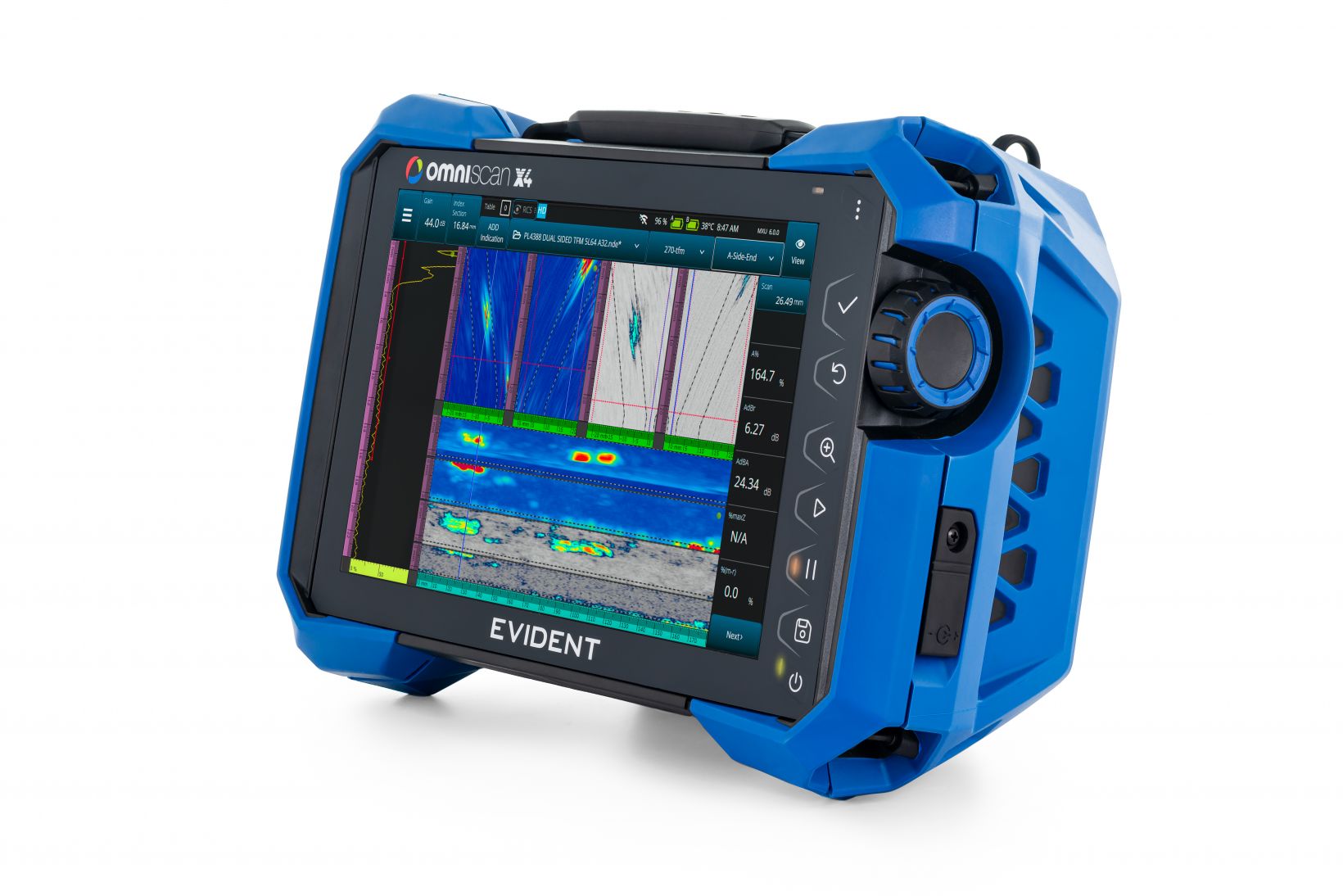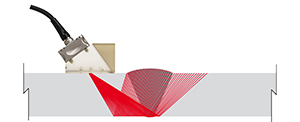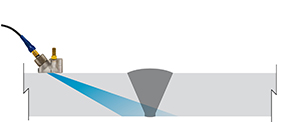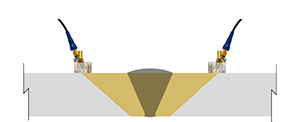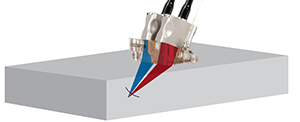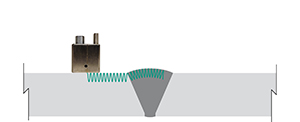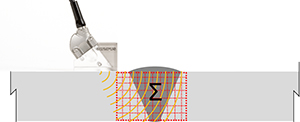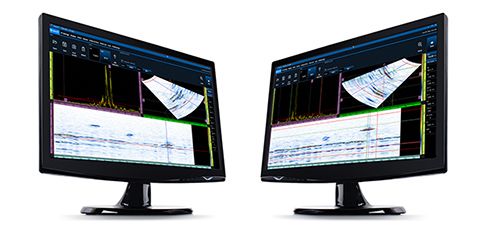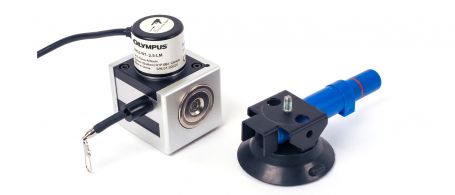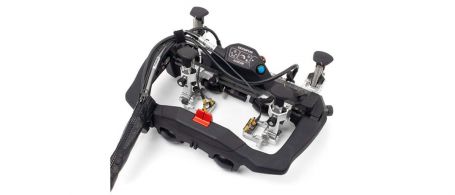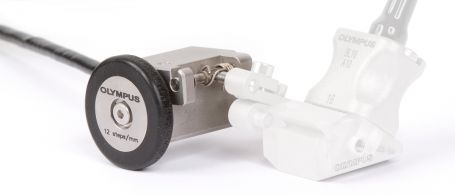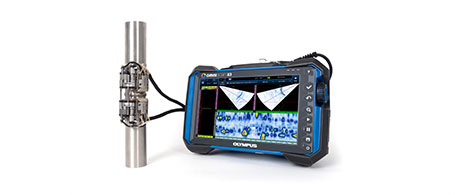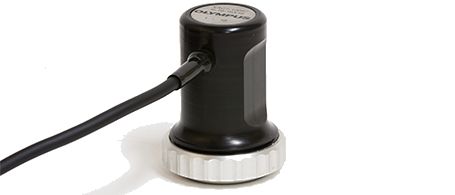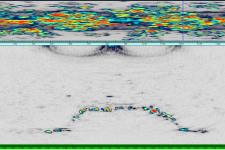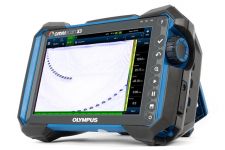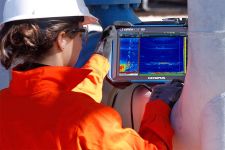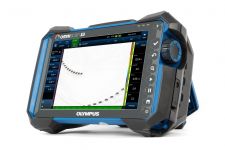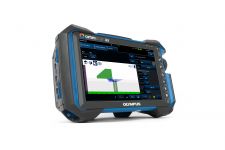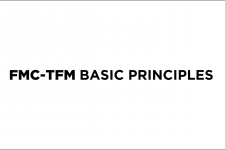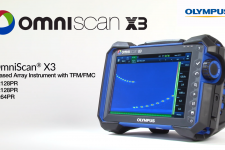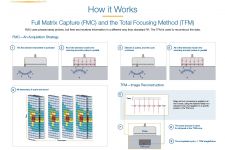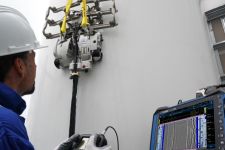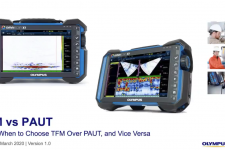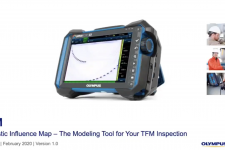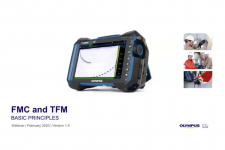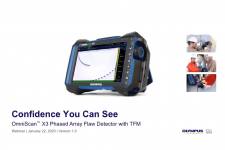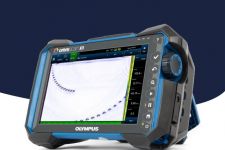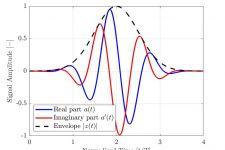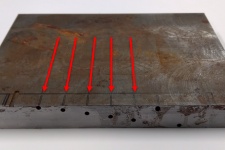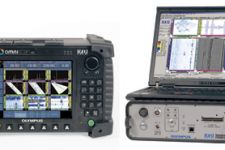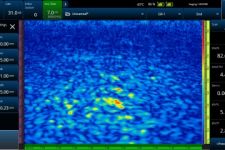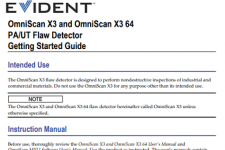Overview
 |
The OmniScan X4 flaw detector excels at a broad range of weld inspection applications, including:
|
|---|
Combine Techniques for Full Weld Coverage and Improved EfficiencyWhether you’re using automated, semiautomated, or manual scanning methods, the OmniScan X4 flaw detector supports many ultrasound techniques. In some cases, you can combine multiple techniques in the same scan to improve the probability of detection and make it easier to identify and size indications. |
|
|---|
Software Features
Dynamic Weld Inspection ToolsWe’ve added tools to improve the entire weld inspection process from creating your scan plan to analysis and reporting. |
Start Your Weld Inspection FasterCreate Setups Quickly The onboard scan plan tool is a fast, visual way to define your part, weld, and acoustic coverage in single or multiple group applications. Use it to confirm that your plan gives you full coverage and obtain a picture of the coverage area for your report. Fast, Single-Pass Calibration Get a clean calibration quickly when using an angle beam transducer. | 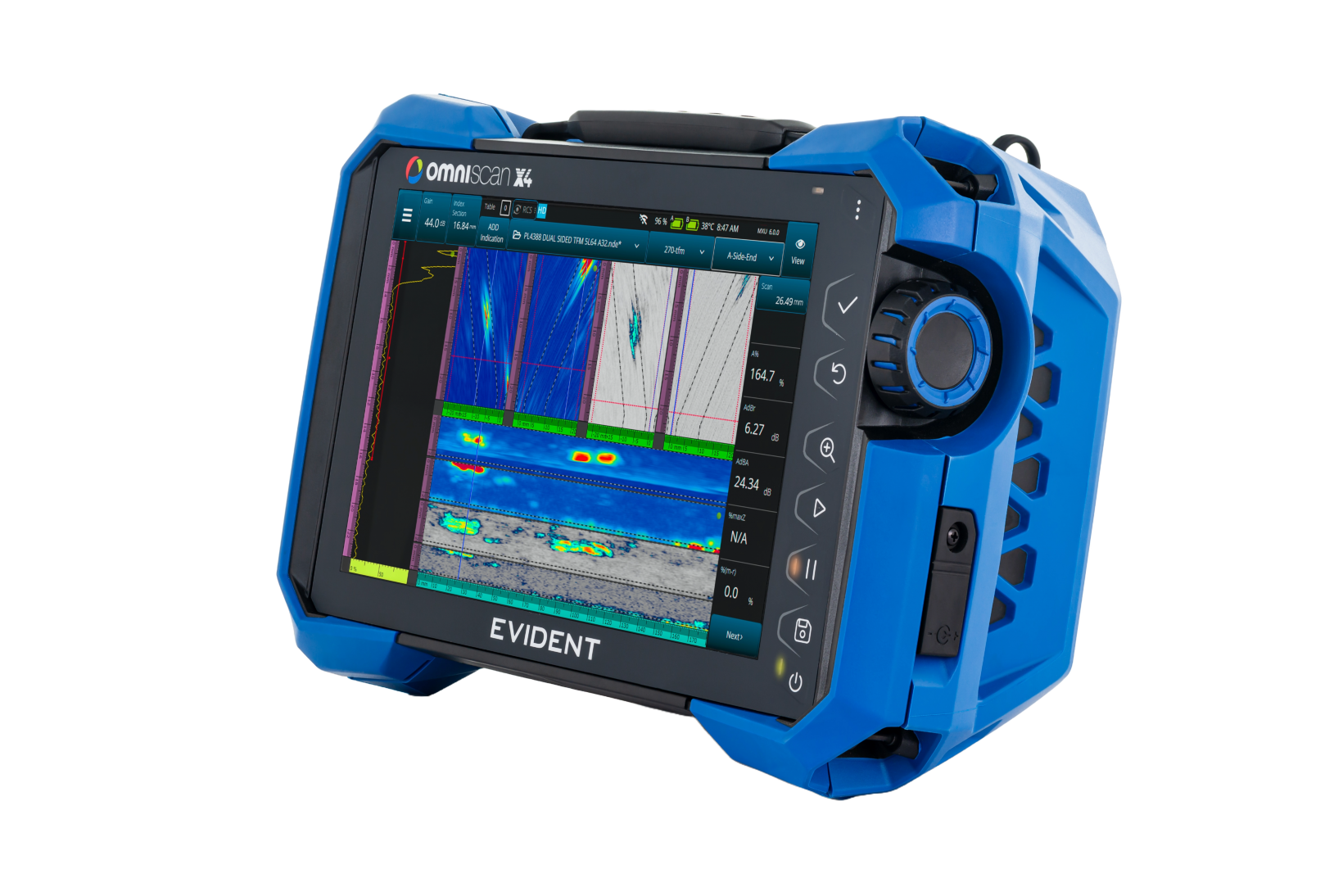 |
|---|
Solutions for Weld InspectionPair the OmniScan X4 flaw detector with a scanner for a complete weld inspection solution.
| 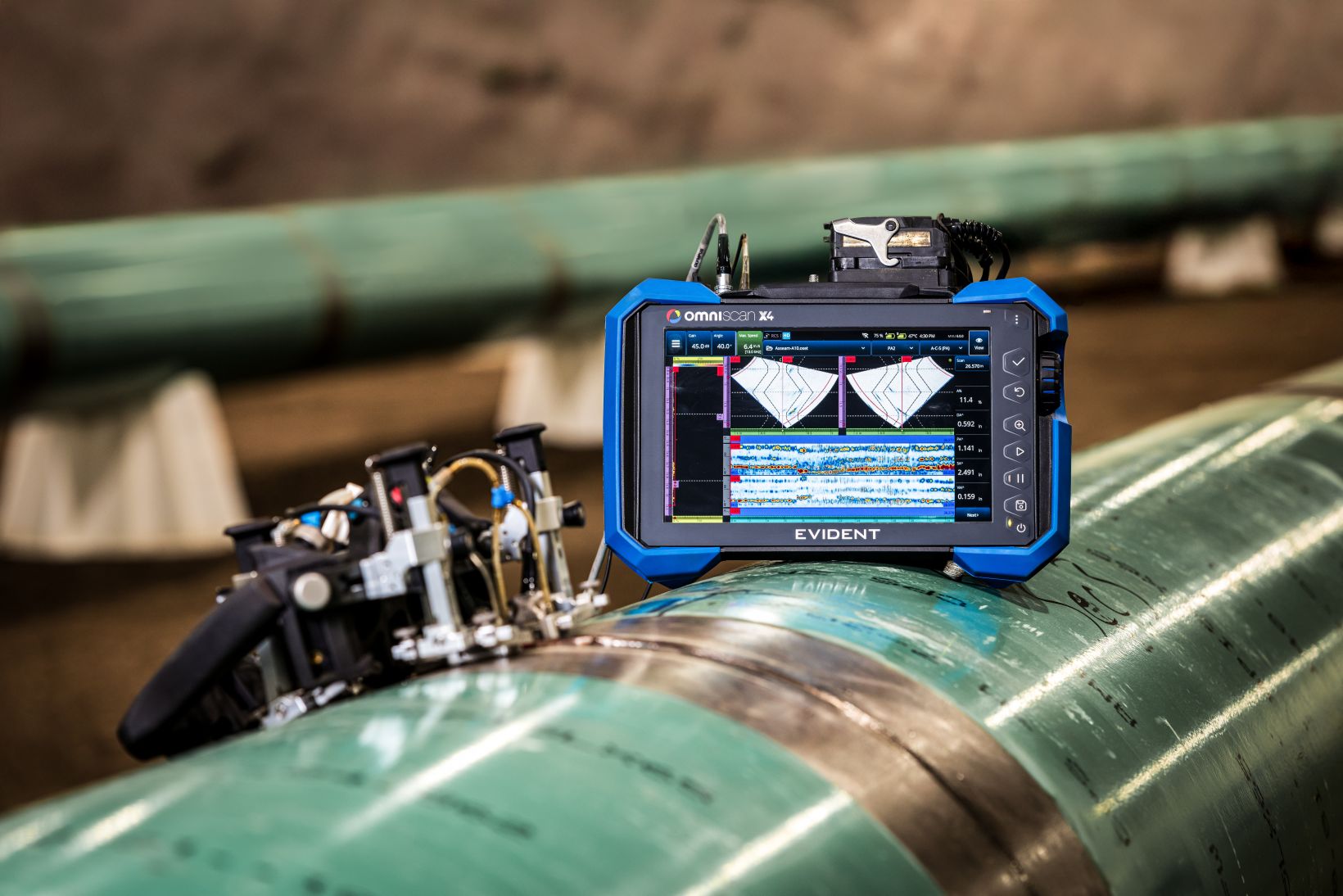 |
|---|
Scanners
Wire EncoderAcquire high-quality phased array data with high positioning accuracy thanks to the wire encoder’s simple streamlined design, enabling you to focus on handling the probe. It installs quickly on both ferromagnetic and nonferromagnetic surfaces. AxSEAMThe semiautomated AxSEAM™ scanner eases long seam weld inspection in pipes. Monitor scan speed and couplant loss and start the data acquisition in the OmniScan™ unit on the ScanDeck™ Module. Easily adjustable probe holders support 4 probes, enabling PA, TOFD, and TFM, and PCI inspection. SteerROVER
The SteerROVER is a fully automated, steerable motorized scanner capable of performing weld inspection in remote locations. It can mount phased array as well as TOFD-P/E probes for inspection of circumferential or longitudinal welds.
WeldROVER
WeldROVER to prosty, odporny na warunki przemysłowe, kodowany skaner zmotoryzowany w jednej osi, który umożliwia akwizycję danych we w pełni zautomatyzowany sposób. Umożliwia prowadzenie wydajnej inspekcji spoin na ferromagnetycznych rurociągach lub zbiornikach przy użyciu maksymalnie 6 sond i techniki Phased Array. UT, TOFD, PA.
Skaner HST-Lite
Nowy skaner HST-Lite to idealne rozwiązanie do ekonomicznych, jednokanałowych badań TOFD, w których ważna jest jakość sygnału. Kombinacja kółek magnetycznych i sprężynowych uchwytów sond zapewnia stabilność potrzebną do prowadzenia badań jednoliniowych z zachowaniem wysokiej jakości. Skaner można obsługiwać jedną ręką. Przyczepia się on do powierzchni ferromagnetycznych
nawet w pozycji odwróconej „do góry nogami”.
Enkoder Mini-Wheel
Enkoder Mini-Wheel służy do pozycjonowania i wymiarowania defektów w osi skanowania. Może synchronizować akwizycję danych z ruchem sondy. Dodatkowo jest wodoodporny i zgodny ze standardowymi klinami PA firmy Olympus.
Skaner COBRA
Ręczny skaner COBRA, w połączeniu z defektoskopem OmniScan MX i modułem 16:128, jest wykorzystywany do przeprowadzania obwodowych inspekcji spoin na rurach o małej średnicy. Skaner COBRA może być wyposażony w dwie sondy PA do inspekcji rur o średnicach zewnętrznych od 0,84 do 4,5 cala.
Skaner HSMT-Compact
Skaner HSMT-Compact to ręczny, jednoosiowy, kodowany skaner. Jest wyjątkowo lekki i mały, a przy tym nadaje się do wielu różnych zastosowań. Można go używać (z maksymalnie 4 sondami) do inspekcji płyt oraz do skanowania obwodowego rur o średnicach zewnętrznych wynoszących zaledwie 4,5 cala.
Skaner HSMT-Flex
Skaner HSMT-Flex jest przeznaczony do prowadzenia ręcznej, jednoosiowej, kodowanej inspekcji spoin obwodowych na rurach o średnicach zewnętrznych wynoszących 4,5 cala lub większych. Dzięki możliwości regulowania skanera w części środkowej można go połączyć z maksymalnie 8 sondami, używając do tego opcjonalnych uchwytów na sondy.
ChainSCANNERThe CHAIN scanner provides a manual pipe-inspection solution for pipes between 1.75 to 38 in. OD. The scanner, held by chain links instead of magnetic wheels is well suited for weld or corrosion inspection on different type of materials. UT, TOFD, PA. HST-X04
Ręczny skaner HST-X04 firmy Olympus wyposażony w technikę dyfrakcyjną TOFD (time-of-flight diffraction) to wydajne i wszechstronne rozwiązanie do inspekcji spoin, dostępne w niskiej cenie.
Skaner VersaMOUSE
Skaner VersaMOUSE™ to skaner przeznaczony do wykonywania skanów kodowanych liniowo przy użyciu sondy Phased Array. Zintegrowany przycisk indeksujący sprawia, że jest on idealny do zastosowań, w których wymagane jest przeprowadzenie mapowania 2D, takich jak inspekcje płaskich paneli z CFRP i inspekcje korozji. Skaner VersaMOUSE umożliwia wykonanie kodowanego skanu jednoliniowego, a następnie indeksowanie pozycji w kierunku prostopadłym.
Można potem wykonać kolejny skan jednoliniowy i zestawić go z poprzednim skanem. Proces ten jest powtarzany w celu utworzenia mapy 2D całego obszaru zainteresowania.
|
Probes
RexoFORMWith its unique Rexolite delay line and small footprint, the RexoFORM wedge is optimized for phased array 0° and angle beam inspection in limited-access locations. It offers an economical corrosion mapping solution, conforming to a wide range of pipe diameters without the need for a continuous water supply. Weld Series ProbesWeld inspection probes offer housings combined with a front or top exit cable to avoid interference with the scanner probe holder. These probes are suitable for manual and automated inspections of welds. The NEW A31 and A32 Weld Series phased array probes and wedges simplify and standardize weld inspections with fewer designs, and improve signal-to-noise ratio. Passive-Axis Focusing (PAF) WedgesThis patented focusing wedge series helps compensate for beam divergence in the passive direction for pipe girth weld inspection. The smaller beam width enables the sizing of shorter flaws on the scan axis, helping lower rejection rates, and sharpening the images. Dual Matrix Array ProbesDual matrix array (DMA) probes consist of two matrix array probes wired to the same connector with the capacity to perform transmit-receive longitudinal (TRL) sound beams. Available in 2.0 MHz and 4.0 MHz, they are particularly helpful when testing cladded pipes or highly attenuating materials. Dual Linear Array ProbeThe new Dual Linear Array™ probe offers several advantages over conventional ultrasonic dual element transducers for corrosion survey applications. This phased array solution improves productivity through features such as larger beam coverage, faster scan speed, and C-scan imaging with increased data-point density. Flexible Phased Array Probe
Our innovative flexible phased array probe enables users to undertake new applications. The FlexoFORM™ scanner uses a flexible array probe to perform corrosion inspection on pipe elbows.
Manual Contact ProbesOur A24 probe series for manual contact inspection incorporates an ergonomic case design, replaceable membrane, and large square aperture to work in a variety of applications. The 0.02-inch (0.5 mm) thick membrane makes it simpler to verify coupling, glides smoothly on rough surfaces, and is resistant to wear. EdgeFORMThe EdgeForm phased array solution enables automotive manufacturers to inspect for voids in bonded or glued seams in trunks, hoods, and door panels. Small-footprint ProbesSmall-footprint probes offer access to confined areas (A00 probe has an 8 × 8 mm footprint). Universal ProbesThe universal probes are designed to have a low-profile probe/wedge combination for easier access in restricted areas. A wide selection of wedges is available to suit any angle beam application. These probes are used for manual or automated inspection of 6.35 mm to 38 mm thick welds and the inspections of castings, forgings, pipes, tubes, and machined and structural components for cracks and welding defects. Near-wall ProbesNear-wall probes offer a shortened dead zone at both ends of the probe (1.5 mm between center of first or last element and housing edge). They are well suited for composite channel inspections and are used for C-scan inspections of composites (delamination, disbonding, and porosity). Deep Penetration ProbesDeep penetration probes can be matched to a wide selection of wedges to suit any angle beam application. These probes are dedicated to deep penetration applications such as the inspection of thick plates and welds, forging, and noisy or granular material. Immersion ProbesImmersion probes are designed to be used with a water wedge or in an immersion tank when the test part is partially or wholly immersed. They are longitudinal wave probes that can be set up for refracted shear-wave inspections using a Rexolite wedge. Curved Array ProbesCurved array probes are made with a corrosion-resistant stainless steel case and are guaranteed waterproof up to 1 m underwater. The acoustic impedance of these probes matches water. They are compatible with adjustable immersion wedges and are used for the inspection of carbon fiber reinforced polymers (CFRP) corners and in addition to the inspection of composite for delamination. Immersion Corner Wedges for Curved Array ProbesImmersion corner wedges for curved array probes are available in specific radius and angle and also with adjustable radius to fit on various components to be inspected. These wedges are designed to perform manual scans and to accommodate the Mini-Wheel encoder. Integrated Wedge and Code Compliant ProbesIntegrated wedge and code compliant probes combine the probe and the wedge in the same housing, offering the lowest-profile probe-and-wedge combination for contact angle beam inspection. Coupling is always good between probe and wedge interfaces, as there is no need for couplant between the probe and wedge. These probes are used for manual weld inspection using 40° to 70° simultaneously in addition to manual inspection of stress-corrosion cracking and AWS and DGS code compliant applications. Wedges for Angle Beam ProbesThe wedges for angle beam probes are available in standard refracted angles of 0°, 45°, 55°, and 60° in steel for angle-beam inspections from 30° to 70°, SW or LW. They come with stainless steel screw receptacles providing a firm anchoring of probes to wedges. The IHC wedge option can be ordered to improve the quality of the inspection: irrigation, mounting holes for the wedge holder to work with any Olympus scanner, and carbide pins to increase wear resistance. |
Resources
BlogRozwiązaniaSeminaria internetoweOficjalne dokumentyPoradnikiNajczęściej zadawane pytaniaInstrukcje obsługi |
